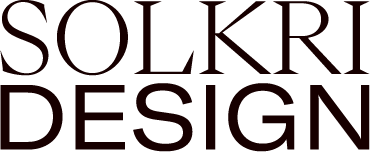Unleash the Power of SEO-Optimized Blog Writing to Accelerate Your Business Growth
Today, it is non-negotiable for businesses serious about growth to prioritize strategic marketing efforts like targeted search engine optimization (SEO). SEO-optimized blog writing has emerged as a powerful, results-driven tactic, enabling businesses to reach their target audience, improve organic search rankings, and enhance their online presence. With over 4.6 billion internet users worldwide, crafting high-quality, SEO-optimized blog content has become a non-negotiable requirement for every business striving to thrive digitally.
SEO-optimized blog writing refers to creating meaningful and engaging blog content tailored to appeal to both human readers and search engines. This versatile marketing strategy offers countless benefits, including increased organic reach, improved search engine rankings, enhanced brand authority, and greater audience engagement. In this article, we'll delve into the importance of SEO-optimized blog writing as a critical component of every successful digital marketing strategy. We will also provide actionable tips and insights for crafting robust, search-engine-friendly blog content that supports your business growth objectives.
The Importance of SEO-Optimized Blog Writing: A Comprehensive Guide to Accelerate Business Growth
Mastering the Art of Keyword Research
The foundation of every effective SEO-optimized blog lies in thorough keyword research. By discovering and targeting the right keywords and phrases, you'll be better positioned to drive organic traffic to your website and rank higher in search engine results. Consider the following tips to conduct effective keyword research:
1. Use keyword research tools: Utilize resources like Google Keyword Planner, Ahrefs, or SEMRush to discover potential keyword ideas, search volume, and competition levels.
2. Focus on long-tail keywords: Longer, more specific phrases tend to have less competition, making it easier to rank and target users with higher purchase intent.
3. Analyze competitors: Look at your competition and identify the keywords they use to rank high in search engine results. This can help you find potential gaps in your keyword strategy.
4. Relevance to user intent: Ensure that your chosen keywords align with the content's purpose and address the needs of your target audience.
Crafting Engaging, High-Quality Content
Once you have identified your target keywords, the next step is to create compelling and informative content that appeals to your audience and search engines. To achieve this, consider the following best practices:
1. Write for your audience first: Prioritize crafting content that genuinely engages and adds value to your audience while incorporating your chosen keywords naturally and contextually.
2. Use clear, concise language: Break down complex topics into digestible chunks using active voice, concise sentences, and approachable language.
3. Break up text with subheadings: Enhance readability by using subheadings to break up your content into clearly defined sections. This also presents excellent opportunities to include your targeted keywords.
4. Incorporate multimedia elements: Enrich your blog posts with relevant images, videos, infographics, or other visual elements to add variety, improve user experience, and bolster user engagement.
Optimizing Metadata and On-Page SEO Elements
Implementing proper on-page SEO optimizations is essential to maximize the discoverability of your blog content. Ensure your content adheres to the following best practices:
1. Optimize title tags: Include your primary keyword in the title tag, keeping it under 60 characters and making it captivating and relevant to your content.
2. Craft compelling meta descriptions: Write enticing meta descriptions (up to 160 characters) that accurately summarize your content and include your primary keyword.
3. Utilize header tags: Employ header tags (H1, H2, H3, etc.) to structure your content, incorporating relevant keywords when appropriate.
4. Optimize image alt-text: Include descriptive, keyword-rich alt-text for your blog's images to improve rankings and accessibility.
Understanding the Power of Internal and External Linking
Proper linking practices, both internal and external, are crucial for improving your content's search engine rankings and providing a seamless user experience. Take note of these linking practices:
1. Internal linking: Link to your related blog posts or website pages to help users explore more of your content, reduce bounce rates, and encourage search engines to crawl and index your site more effectively.
2. External linking: When referencing external sources, articles, or statistics, link to reputable websites with high domain authority. This practice can enhance your credibility and encourage reciprocal linking from other sites.
3. Anchor text optimization: Choose descriptive, keyword-rich anchor text to link to your internal and external content. Ensure it aligns naturally with your content and provides context for users and search engines.
4. Balance link usage: Avoid excessive linking that could detract from your content's message or user experience, and be mindful of the linking ratio between internal and external links.
Measuring and Evaluating Your Blog's Performance
An integral component of SEO-optimized blog writing involves tracking your content's performance and refining your efforts. Use tools like Google Analytics, Google Search Console, or similar analytics platforms to measure critical metrics such as organic traffic, bounce rates, conversion rates, and dwell times. By monitoring these metrics and analyzing user behavior, you'll glean valuable insights that can inform your blog strategy, identify areas for improvement, and drive business growth. Usually, if you hire a marketing agency, they will provide regular reporting of all these analytics, so you don't have to experience the learning curve of figuring out how to compile them on your own.
Conclusion
SEO-optimized blog writing is invaluable for businesses looking to boost their online presence, engage their audience, and achieve measurable growth. By mastering the art of keyword research, creating high-quality content, optimizing on-page SEO elements, implementing effective linking practices, and consistently evaluating your blog's performance, you'll position your brand for long-term success in the digital landscape. Embrace the potential of SEO-optimized blog writing, and watch your business flourish.
Experience the transformative power of expert SEO-optimized content writing services from our seasoned professionals. Connect with us today to learn more about how we can drive growth for your business and propel you toward lasting success.
